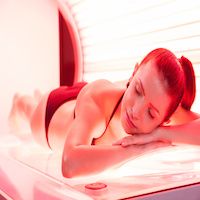Article
Teens Who Use Indoor Tanning Are at Higher Risk for Substance Abuse
Author(s):
A correlation has been found between indoor tanning and substance abuse among high school students in Colorado.

A correlation has been found between indoor tanning and substance abuse among high school students in Colorado.
Robert Dellavalle, MD, associate professor of dermatology at the University of Colorado School of Medicine, said, “A growing national body of evidence links indoor tanning with other risky health-related behavior among adolescents.
A study recently published in JAMA Dermatology outlined that the motivation for indoor tanning enthusiasts serves as the key to understanding why it is also linked to other risky behaviors.
According to Dellavalle, people often tan for both psychological and physiological reasons. “For example, indoor tanning and use of steroids may both stem from the motivation to enhance one’s appearance. Data also implicate physiological pathways in indoor tanning that may be similar to those of substance abuse.”
Prior research had also showed indoor tanning could release endorphins in users that may potentially be addictive.
Using the Healthy Kids Colorado Survey of health data from Colorado public schools, researchers monitored a total of 12,144 students’ answers to the question, “During the last 12 months, how many times did you use an indoor tanning device such as a sunlamp, sunbed, or tanning booth?”
Results revealed females were nearly twice as likely to engage in indoor tanning as males, but that any lifetime use of steroids was the variable often associated with indoor tanning, especially among males.
Similarly, the study found, “Any alcohol consumption within the prior 30 days and marijuana use were also associated with indoor tanning, as was lifetime use of select illicit drugs.”
The World Health Organization had long considered UV radiation as a group 1 carcinogen, leading to higher risks of melanoma, basal cell carcinoma, and squamous cell carcinoma, but Dellavalle acknowledged, “Risky behaviors tend to go together.”
As such, experts suggest that physicians already treating their patients who are indoor tanners to also evaluate them for steroid use.





